Abstract
The sagittal vestibulocollic reflex (v.c.r.) evoked by nose-up, nose-down movements of the head, has been studied in the neck extensor muscle biventer cervicis in the decerebrate cat. Nose-down movements of the head increased, and nose-up movements decreased, electromyographic (e.m.g.) activity in the biventer cervicis muscles of the left and right sides. At low frequencies of sinusoidal head movement (0.1-0.5 Hz), the gain of the sagittal v.c.r. was approximately constant, and e.m.g. modulation showed a phase lead of about 40 deg with respect to head position. At higher frequencies (2-5 Hz), v.c.r. gain increased at a rate close to 40 dB/decade, and phase lead increased to approach 150 deg. The relation between head movement and v.c.r. activity may be described by a transfer function containing two lead terms, with time constants of 0.07 and 0.23 s, and two lag terms, with time constants of 5.3 and 9.9 s. When movements of the head were accompanied by stretching of the biventer cervicis muscles, the gain of the sagittal v.c.r. was increased threefold, at all frequencies between 0.1 and 5 Hz, with no substantial change in phase. Sinusoidal stretching of the biventer cervicis muscles, with the head stationary, evoked a stretch reflex (cervicocollic reflex, c.c.r.) the behaviour of which was similar to that of a second-order system described by a transfer function containing two lead terms with time constants of 0.07 and 0.16 s. This difference in dynamics between the v.c.r. and the c.c.r. indicates that the lag terms in the v.c.r. transfer function reflect the frequency-response properties of the vestibular pathway to the biventer cervicis muscles, as they do not appear when the same muscles participate in the c.c.r. The vectorial differences between the frequency-response of the sagittal v.c.r. with and without concomitant stretching of the biventer cervicis muscles is quantitatively similar to the frequency-response of the c.c.r. evoked by sinusoidal stretching. The inputs from the vestibular and stretch receptors thus appear to sum linearly to produce the increase in v.c.r. gain, at least over the frequency range 0.1-1 Hz. Since most head movements, and all voluntary head movements, involve a rotation of the head in relation to the neck, the potentiation of the gain of the v.c.r. by afferents from stretch receptors (presumably muscle spindles) in the neck muscles is an important factor in the normal reflex stabilization of head position.
Full text
PDF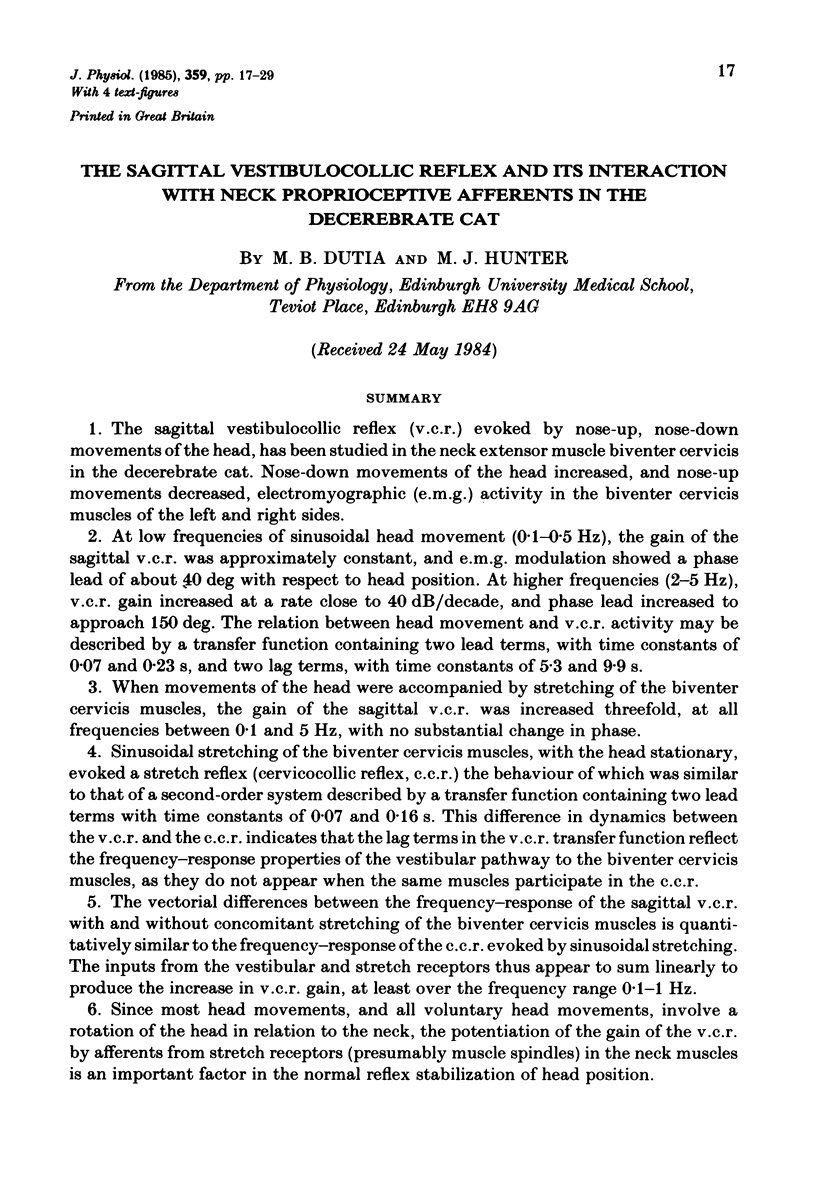
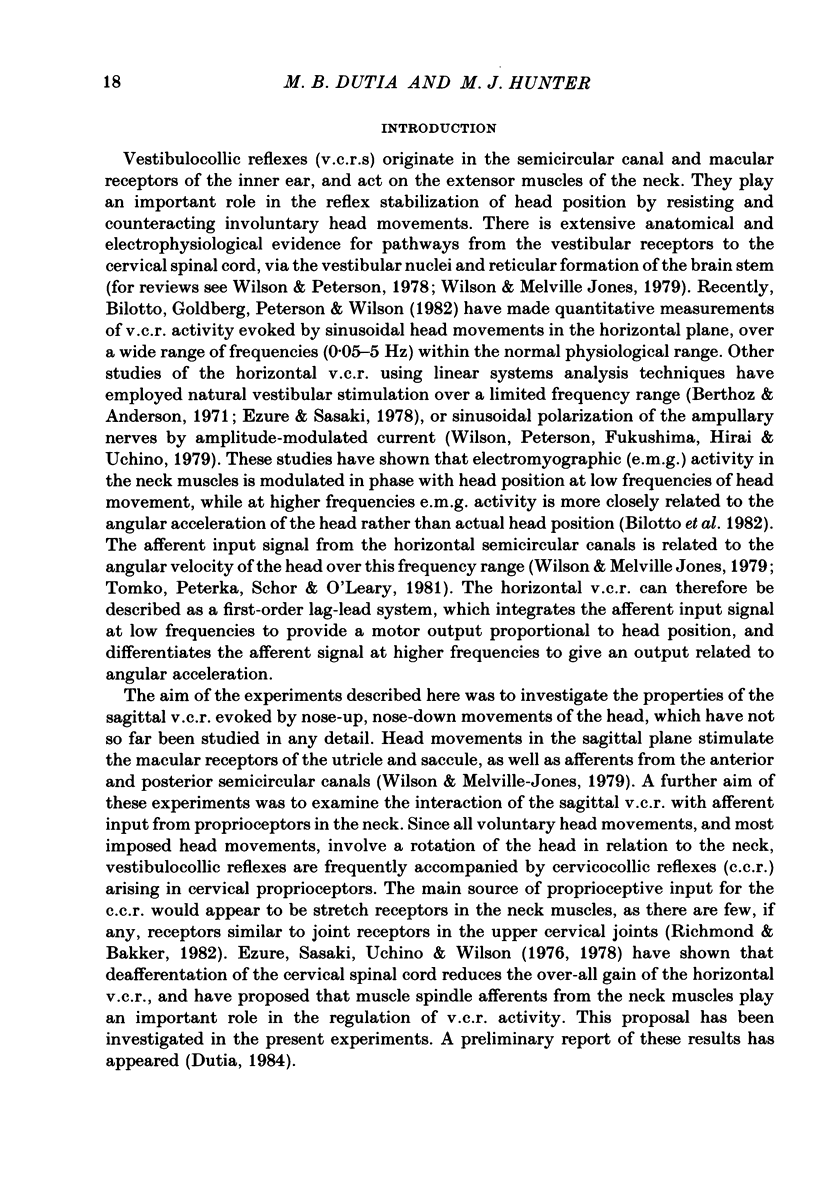
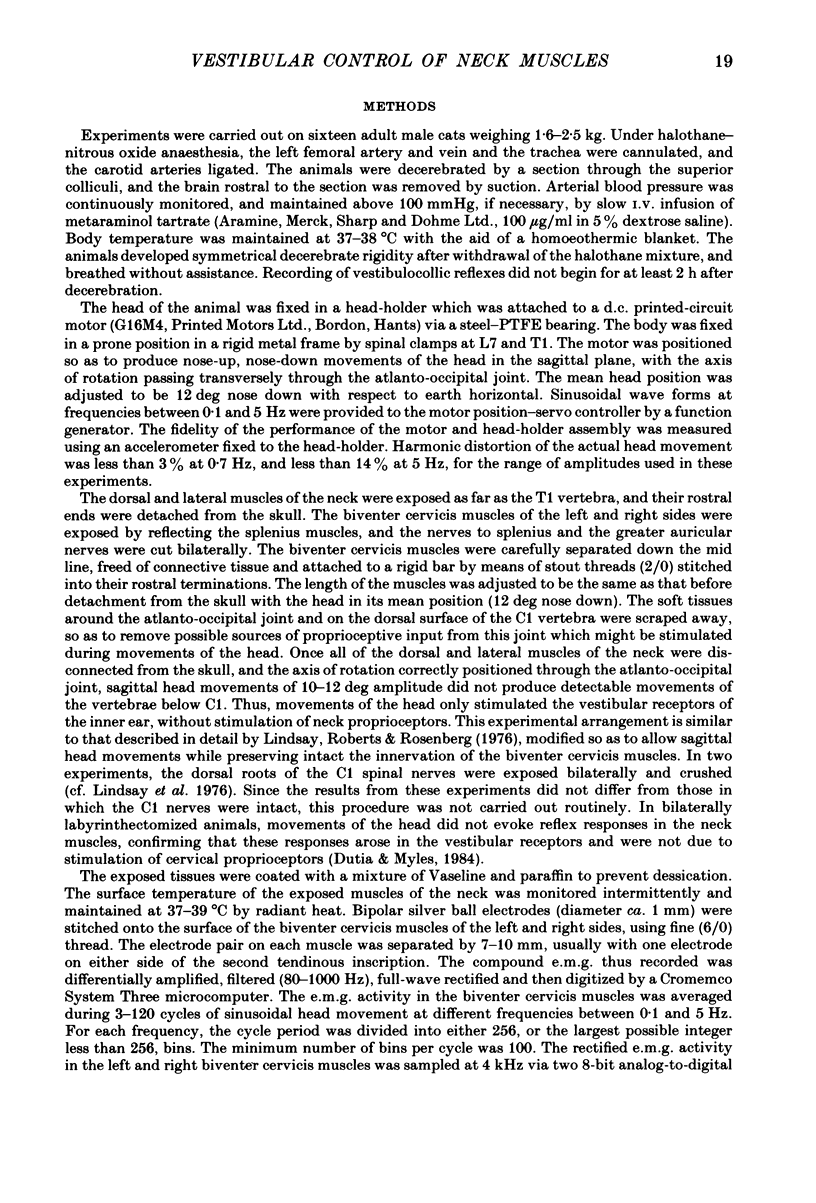
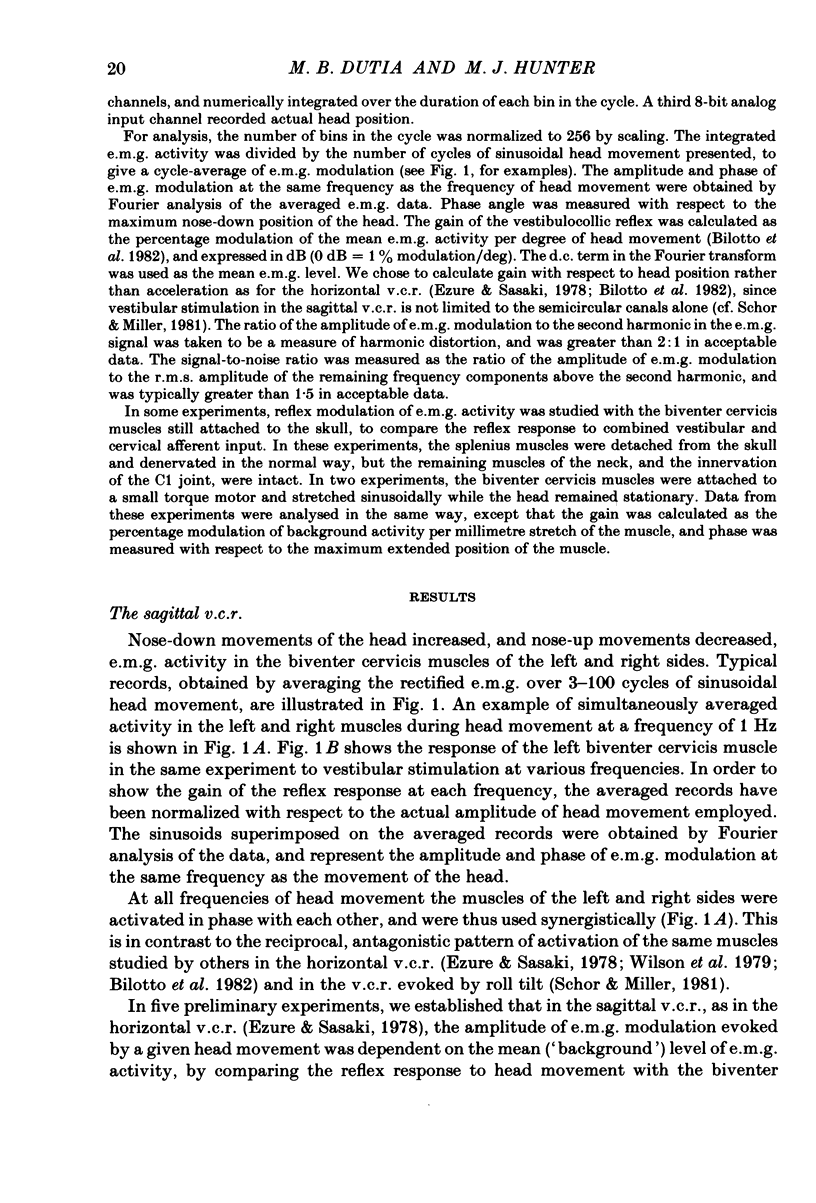
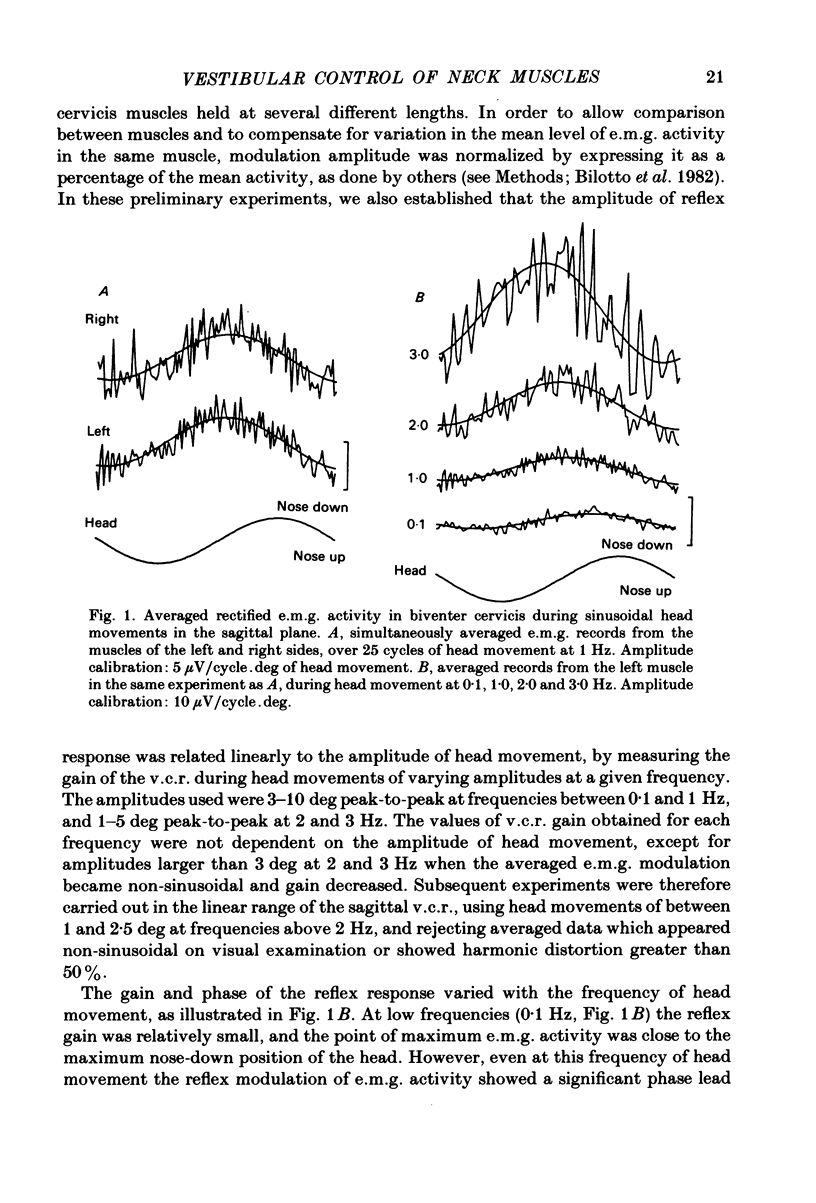
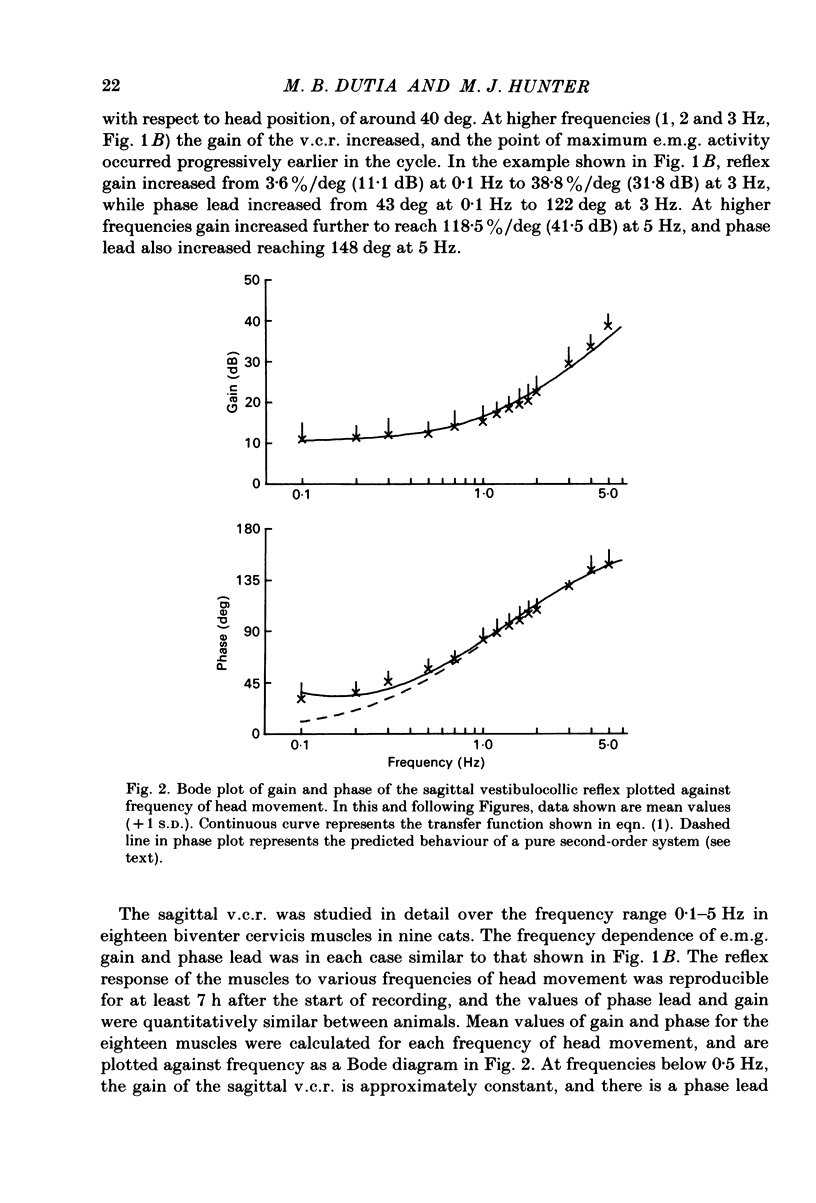
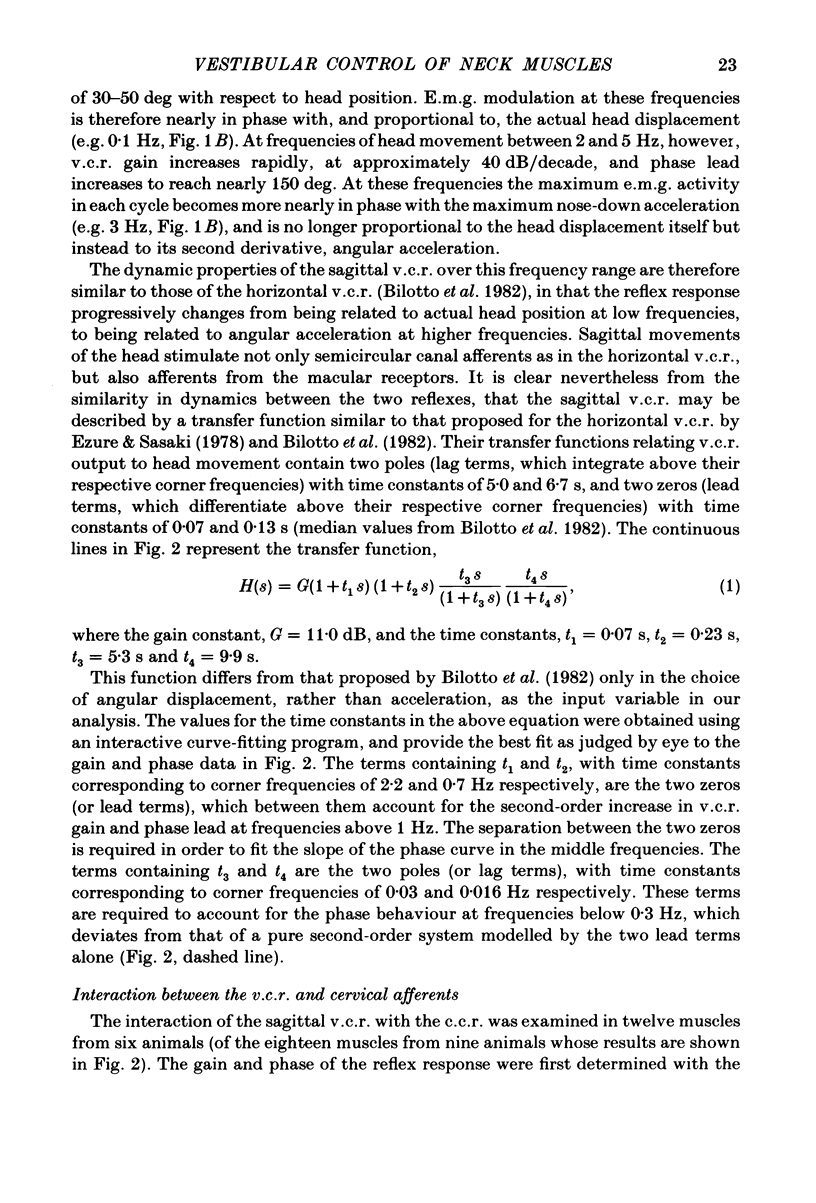
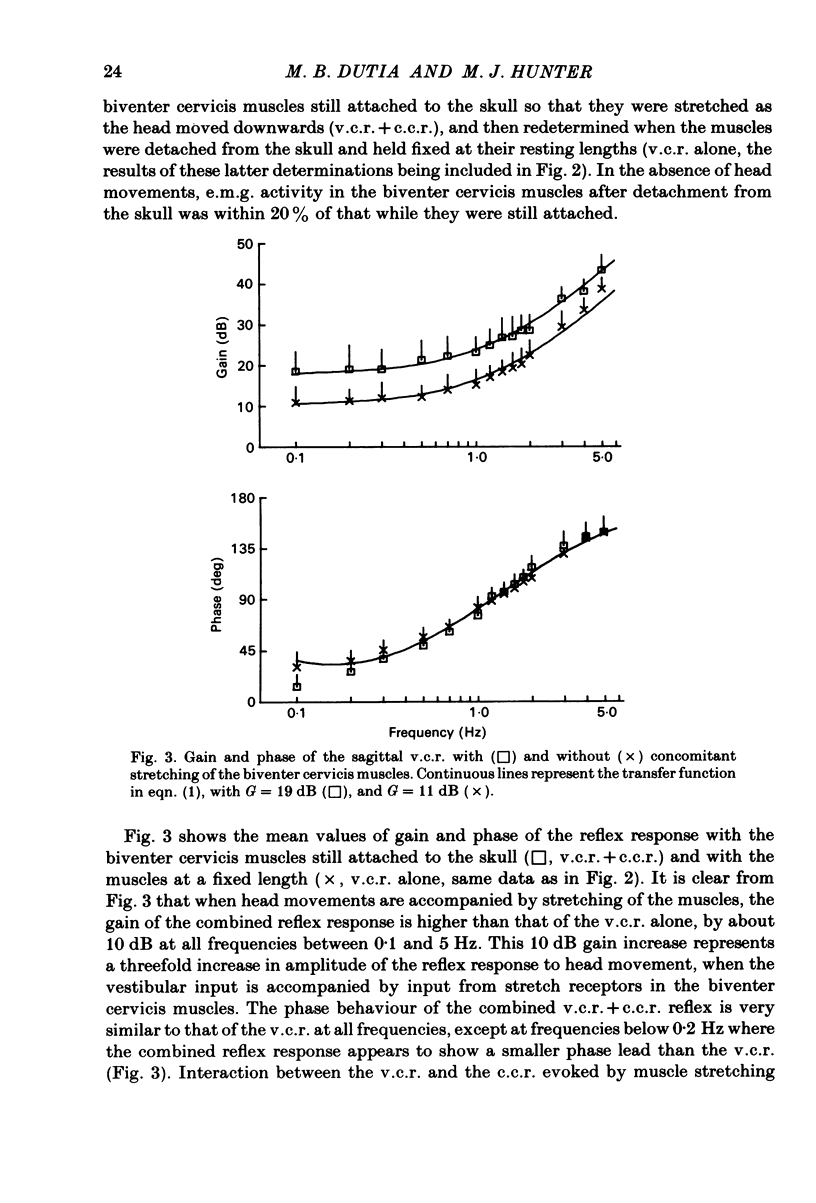
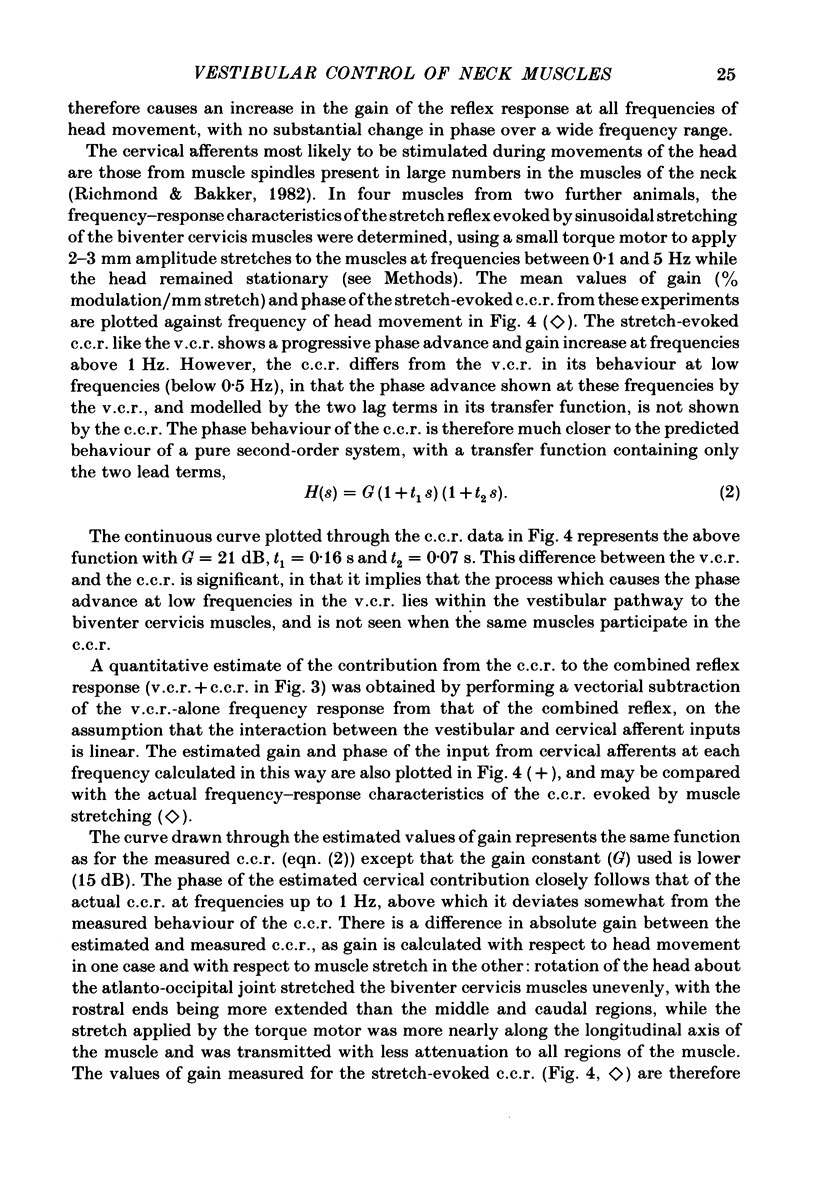
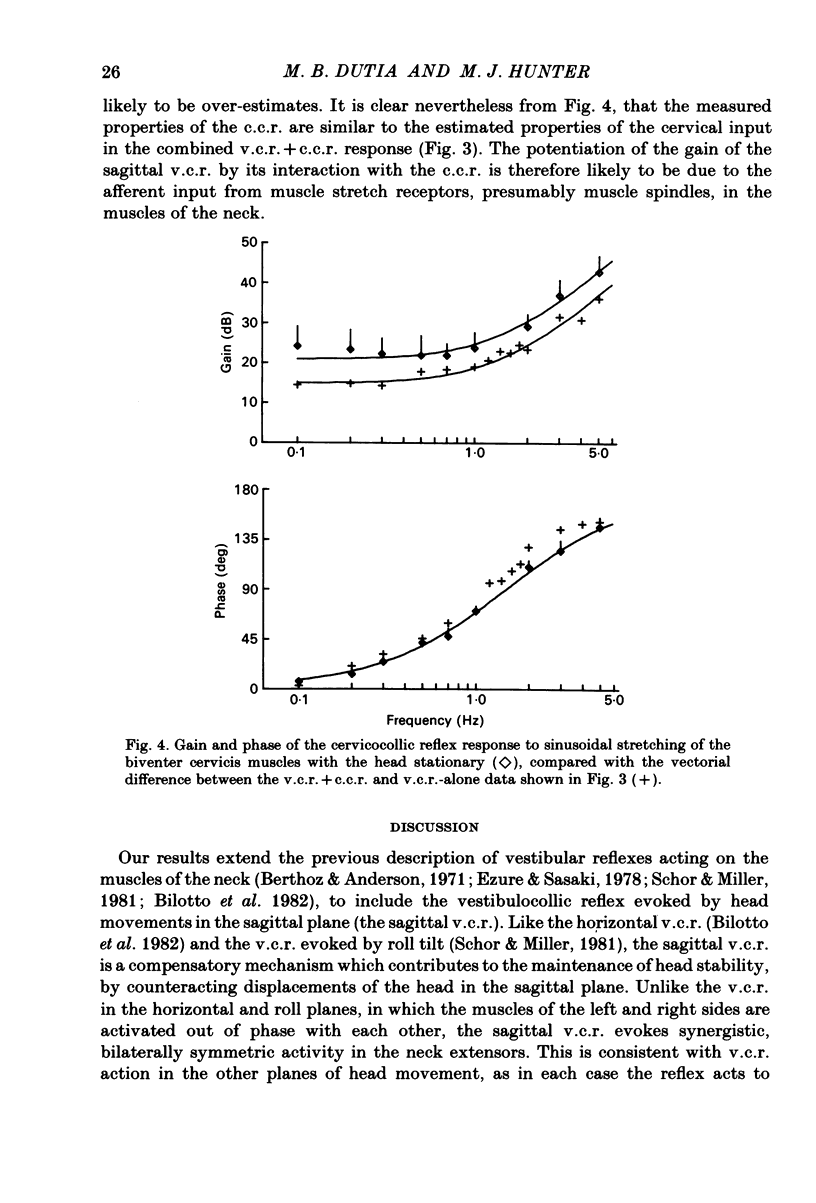
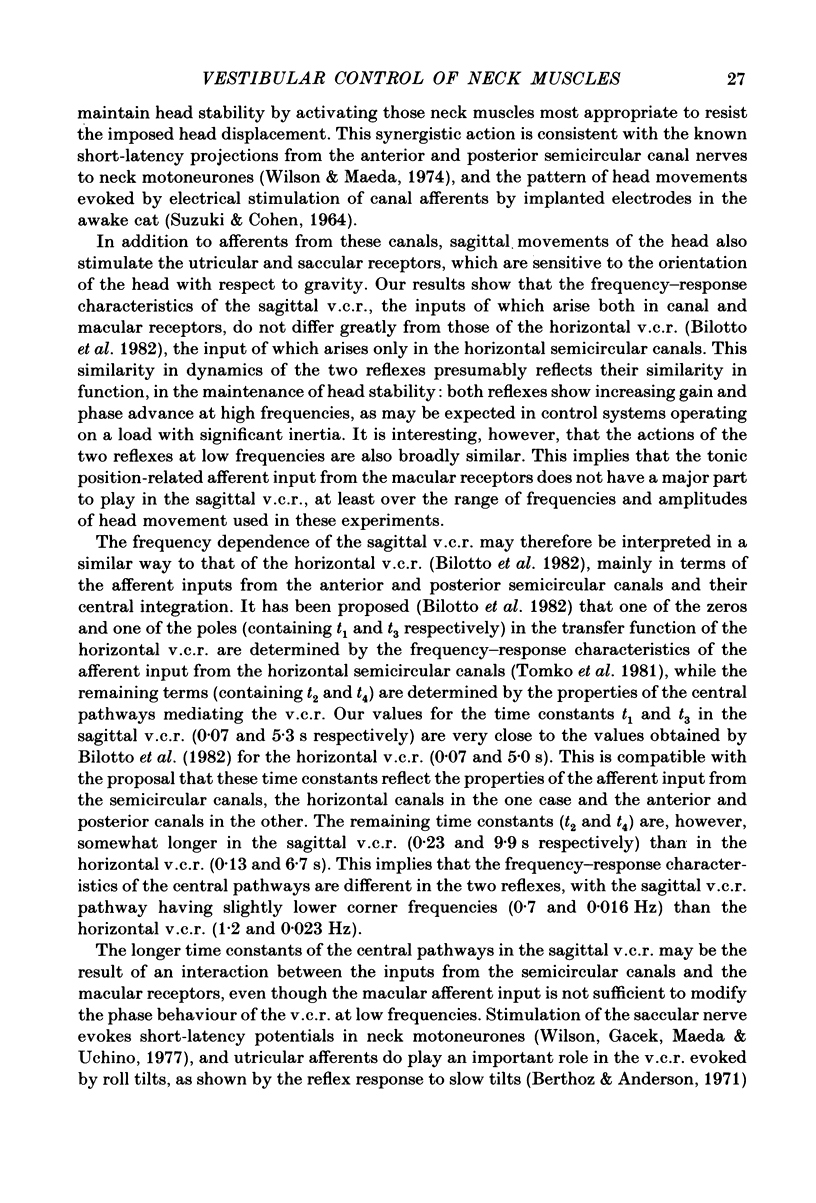
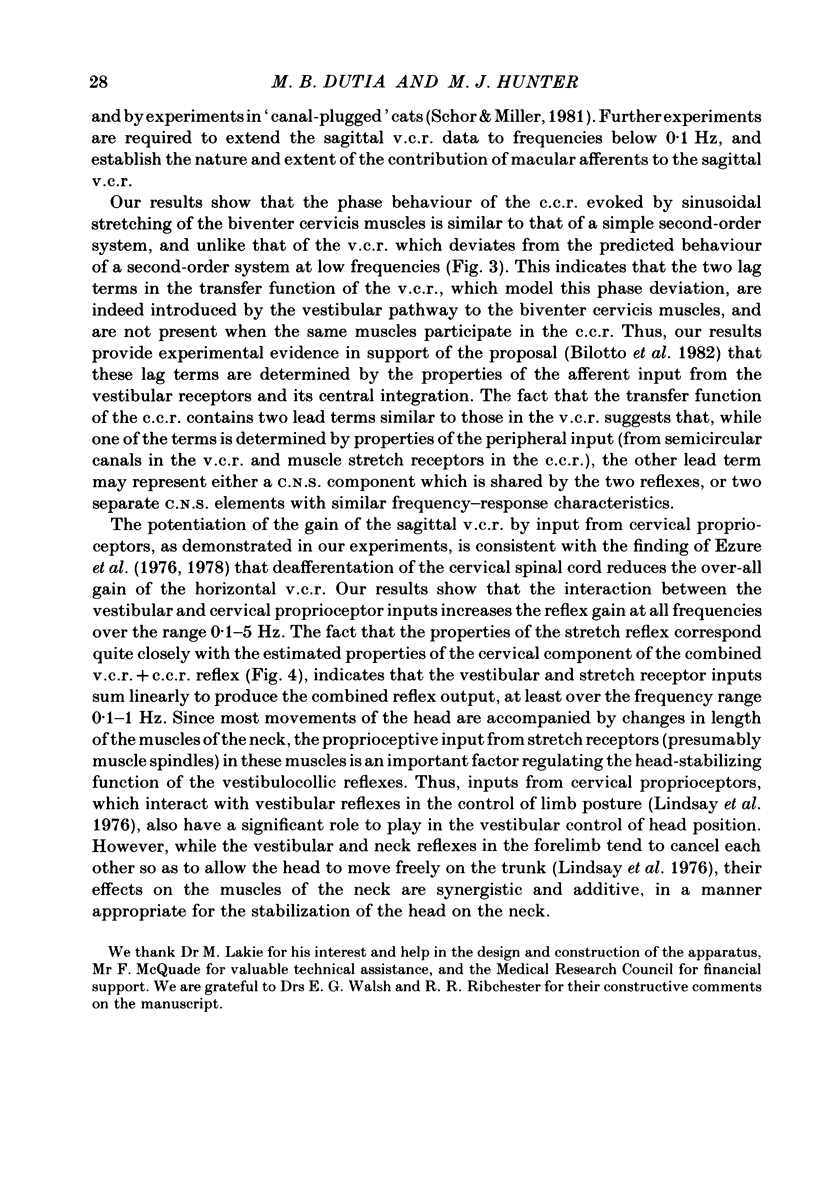
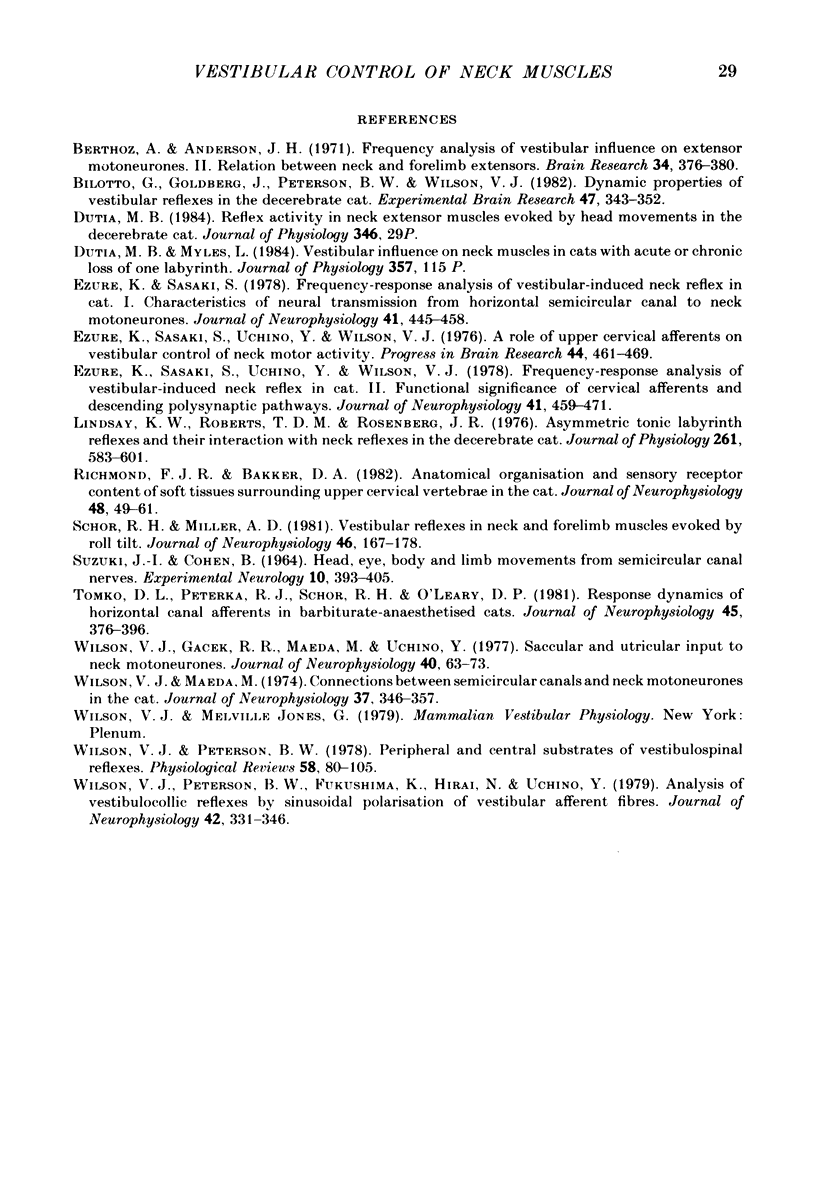
Selected References
These references are in PubMed. This may not be the complete list of references from this article.
- Berthoz A., Anderson J. H. Frequency analysis of vestibular influence on extensor motoneurons. II. Relationship between neck and forelimb extensors. Brain Res. 1971 Nov;34(2):376–380. doi: 10.1016/0006-8993(71)90290-3. [DOI] [PubMed] [Google Scholar]
- Bilotto G., Goldberg J., Peterson B. W., Wilson V. J. Dynamic properties of vestibular reflexes in the decerebrate cat. Exp Brain Res. 1982;47(3):343–352. doi: 10.1007/BF00239353. [DOI] [PubMed] [Google Scholar]
- Ezure K., Sasaki S. Frequency-response analysis of vestibular-induced neck reflex in cat. I. Characteristics of neural transmission from horizontal semicircular canal to neck motoneurons. J Neurophysiol. 1978 Mar;41(2):445–458. doi: 10.1152/jn.1978.41.2.445. [DOI] [PubMed] [Google Scholar]
- Ezure K., Sasaki S., Uchino Y., Wilson V. J. A role of upper cervical afferents on vestibular control of neck motor activity. Prog Brain Res. 1976;44:461–469. doi: 10.1016/S0079-6123(08)60752-9. [DOI] [PubMed] [Google Scholar]
- Ezure K., Sasaki S., Uchino Y., Wilson V. J. Frequency-response analysis of vestibular-induced neck reflex in cat. II. Functional significance of cervical afferents and polysynaptic descending pathways. J Neurophysiol. 1978 Mar;41(2):459–471. doi: 10.1152/jn.1978.41.2.459. [DOI] [PubMed] [Google Scholar]
- Lindsay K. W., Roberts T. D., Rosenberg J. R. Asymmetric tonic labyrinth reflexes and their interaction with neck reflexes in the decerebrate cat. J Physiol. 1976 Oct;261(3):583–601. doi: 10.1113/jphysiol.1976.sp011575. [DOI] [PMC free article] [PubMed] [Google Scholar]
- Richmond F. J., Bakker D. A. Anatomical organization and sensory receptor content of soft tissues surrounding upper cervical vertebrae in the cat. J Neurophysiol. 1982 Jul;48(1):49–61. doi: 10.1152/jn.1982.48.1.49. [DOI] [PubMed] [Google Scholar]
- SUZUKI J. I., COHEN B. HEAD, EYE, BODY AND LIMB MOVEMENTS FROM SEMICIRCULAR CANAL NERVES. Exp Neurol. 1964 Nov;10:393–405. doi: 10.1016/0014-4886(64)90031-7. [DOI] [PubMed] [Google Scholar]
- Schor R. H., Miller A. D. Vestibular reflexes in neck and forelimb muscles evoked by roll tilt. J Neurophysiol. 1981 Jul;46(1):167–178. doi: 10.1152/jn.1981.46.1.167. [DOI] [PubMed] [Google Scholar]
- Tomko D. L., Peterka R. J., Schor R. H., O'Leary D. P. Response dynamics of horizontal canal afferents in barbiturate-anesthetized cats. J Neurophysiol. 1981 Mar;45(3):376–396. doi: 10.1152/jn.1981.45.3.376. [DOI] [PubMed] [Google Scholar]
- Wilson V. J., Gacek R. R., Maeda M., Uchino Y. Saccular and utricular input to cat neck motoneurons. J Neurophysiol. 1977 Jan;40(1):63–73. doi: 10.1152/jn.1977.40.1.63. [DOI] [PubMed] [Google Scholar]
- Wilson V. J., Maeda M. Connections between semicircular canals and neck motorneurons in the cat. J Neurophysiol. 1974 Mar;37(2):346–357. doi: 10.1152/jn.1974.37.2.346. [DOI] [PubMed] [Google Scholar]
- Wilson V. J., Peterson B. W., Fukushima K., Hirai N., Uchino Y. Analysis of vestibulocollic reflexes by sinusoidal polarization of vestibular afferent fibers. J Neurophysiol. 1979 Mar;42(2):331–346. doi: 10.1152/jn.1979.42.2.331. [DOI] [PubMed] [Google Scholar]
- Wilson V. J., Peterson B. W. Peripheral and central substrates of vestibulospinal reflexes. Physiol Rev. 1978 Jan;58(1):80–105. doi: 10.1152/physrev.1978.58.1.80. [DOI] [PubMed] [Google Scholar]


